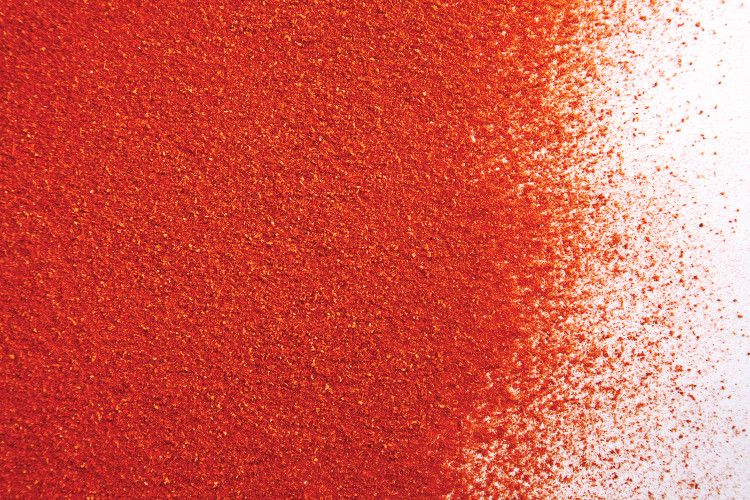Clean-label color challenges
Natural colors, sourced from food, are growing in popularity, but they still pose some challenges to formulators making clean-label products.
Photo © AdobeStock.com/eskay lim

The color of a food or drink makes a big impression when consumers are making a purchasing decision. Artificial colors have long been an important tool for food formulators, but with the push for clean-label products, artificial colors continue to fall out of favor. Natural colors, sourced from food, are growing in popularity, but they still pose some challenges to formulators making clean-label products.
Interplay of Color and Flavor
“The main challenges switching to natural colors include stability and cost, and it is not as simple as a 1:1 replacement for artificial,” explains Brian Stuart, color chemist for Gold Coast Ingredients (Commerce, CA). “When using natural colors, the pH, any heat being added, if the product is being exposed to light-all of this has to be taken into account when using natural. Then the cost of natural colors is usually more expensive than artificial colors.”
Because natural colors are sourced from food, their taste may not be neutral and will therefore contribute to the end product. Turmeric and paprika are good examples of ingredients that produce vibrant, natural colors but that also impart flavor. When formulating a product from scratch, this must be taken into account and either intentionally become part of the product’s flavor profile, or else formulators must compensate for the taste.
“This is not often an issue due to the low usage of coloring agents,” says Stuart. “However, if the usage of the coloring agent is high, then it might become necessary to mask any undesired flavor the color gives the product. Masking agents are a great ingredient to mask any off notes put off by natural colorants, which tend to carry an ‘earthy,’ ‘dirt,’ or possibly bitter taste.”
Replacing traditionally used colors with natural colors requires creativity to ensure that the overall flavor profile remains the same. For example, because of Prop 65 regulations in California, many manufacturers are trying to find an alternative to caramel coloring. This is why Sensient (Chicago, IL) recently launched Sienna Colors, a portfolio of brown shades from natural sources that are free from furfuryl alcohol and 4-MEI. Sienna Colors are heat and light stable across a wide pH range.
“If you think about it, caramel may or may not have contributed taste to the product, and if you’re adding different colors, it could affect your taste profile. That’s why the colors and flavors [we offer] are a unique, added-value proposition we have for our customers,” explains Aret Meyer, general manager of savory flavors for Sensient.
Mixing the Right Shade
If you’ve ever bought paint at a hardware store, you know that the color you choose is actually a blend of many different colors at a specific ratio. Coloring foods can be similar.
“The intensity of the color is dependent on the molecule that acts as the coloring constituent,” explains Stuart. “For example, red beet is a red color, and that specific red color comes from a molecule called betanin. The intensity of the red beet color is determined by the concentration of betanin content. Variation in hue stems from the formulation of blends by adding a variety of natural colors to achieve a new hue, and even small amounts of different additions of colors can make a large difference in terms of a variation of that color-for example, transitioning a light green color to a lime green color.”
The way a color looks may also depend on whether the source material is a powder or liquid. Powders, for instance, can vary in color. “Powders tend to have good-to-okay consistency in terms of shade and hue, but can vary more than liquids due to the fact that it is a natural color. Since the source of the color has several variables, these factors can cause, for example, a blue color to be darker or lighter, but when put into solution would remain consistent in terms of the same color from different batches,” explains Stuart. By contrast, he says, “Liquid colors tend to be consistent in terms of shade and hue since the color is dispersed into a liquid media, which allows for a different color expression than that of powder.”
Using a powder or liquid has different advantages and disadvantages. Powders, for example, can be used in most applications and have a longer shelf life and stability in storage, but liquids tend to be more versatile and easier to work with for measuring out and handling the material. Liquid colors can be more challenging to use in oil-based applications, however.
Considering that these differences are pretty small, powder and liquid forms are mostly interchangeable, says Stuart, and depend on the customer’s preference.

Prinova acquires Aplinova to further increase its footprint in Latin America
April 7th 2025Prinova has recently announced the acquisition of Brazilian ingredients distributor Aplinova, which is a provider of specialty ingredients for a range of market segments that include food, beverage, supplements, and personal care.


















